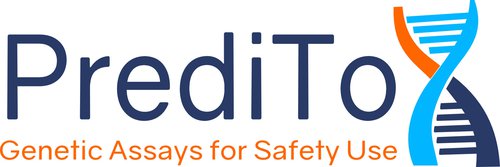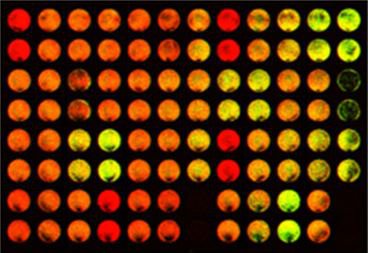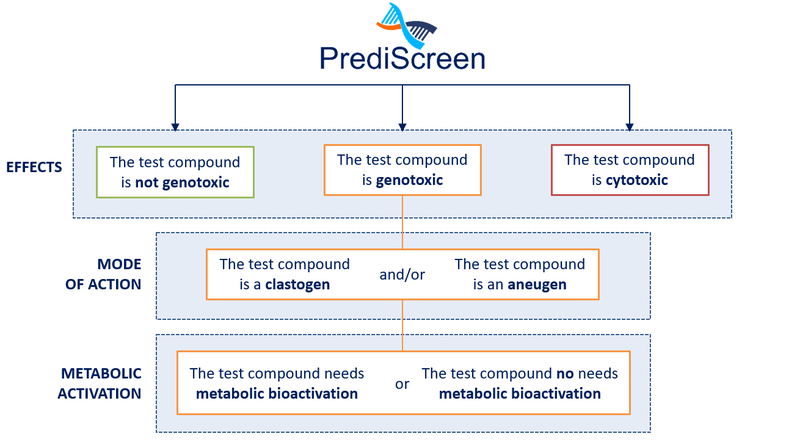PrediTox Genotoxicity Assessment

Evaluating the genotoxic
PrediTox is an innovative company that commits to support its clients in evaluating the genotoxic and potentially carcinogenic properties of their compounds/ samples. In parallel, PrediTox carry out R&D studies in order to develop new tests in accordance with new regulatory and societal requirements.
In accordance with this directive, and in compliance with the 3Rs, the PrediScreen genotoxicity assay that we have developed and validated is an in vitro genotoxicity assay, performed on human cells (INRAE license know-how). This test makes it possible to study the carcinogenic potential of any type of compound or of samples.
PrediScreen Assay
Since 2007, the European Union REACH regulation calls for the development of alternative in vitro methods to minimize the use of animals. These regulations make it possible to quickly and efficiently characterize the genotoxic and carcinogenic potential of the thousands of compounds without performing animal testing.
In accordance with this directive, and in compliance with the 3Rs, the PrediScreen genotoxicity assay is an in vitro genotoxicity assay, performed on human cells. This test makes it possible to study the carcinogenic potential of any type of compound or of samples.

Genotoxicity is the study of DNA damage that can lead to the development of cancer. It can be induced by many mechanisms of action, from direct genotoxic compounds or bioactivated ones, the latter needing to be metabolized by the cells of the organism to have an effect.
It is now required in a regulatory manner for genotoxicity tests to have indications on this genotoxic mode of action (aneugenic (abnormality of the chromosome number) or clastogenic (abnormality of the chromosome structure)) of the tested products and the PrediScreen assay studies two phosphorylated proteins each having an important role during this damage: histone H2AX as a global indicator of the genotoxicity of a compound and the visualization of a clastogenic effect (Kopp et al. 2019), and histone H3 as a specific biomarker of aneugenic compound (Khoury et al. 2016b).
PrediTox has demonstrated that the combined use of these two biomarkers in the PrediScreen assay makes it possible to study the genotoxicity of a compound or sample regardless of its mode of genotoxic action (Khoury et al. 2016b).
The validation of this method was carried out in accordance with the requests of the European Union Reference Laboratory for alternatives to animal testing (EURL-ECVAM) for the evaluation of new genotoxicity test in Europe. This study allowed us to conclude that the γH2AX test made it possible to detect compound with different mechanisms of action with great sensitivity and specificity compared to the other genotoxic tests currently used (Khoury et al. 2013). This test also demonstrated greater predictivity (greater than 90%) than the other regulatory tests currently used (Kopp et al. 2019) and does not present false-positive results (Khoury et al. 2020).
In parallel with the study of genotoxic potential, the PrediScreen assay studies the cytotoxicity of compounds or samples on cells. The toxicity of a chemical can lead to a series of physiological and metabolic reactions within a living organism and can ultimately result in cellular damage, leading to its death.
The PrediScreen assay thus aims to study all of these mechanisms, and provides five different information in a single test:
- the test compound is cytotoxic or not
- the test compound is genotoxic or not
- the genotoxic mode of action involved is a clastogenic mode of action ...
- … and / or aneugenic
- the compound needs bioactivation to be genotoxic.
